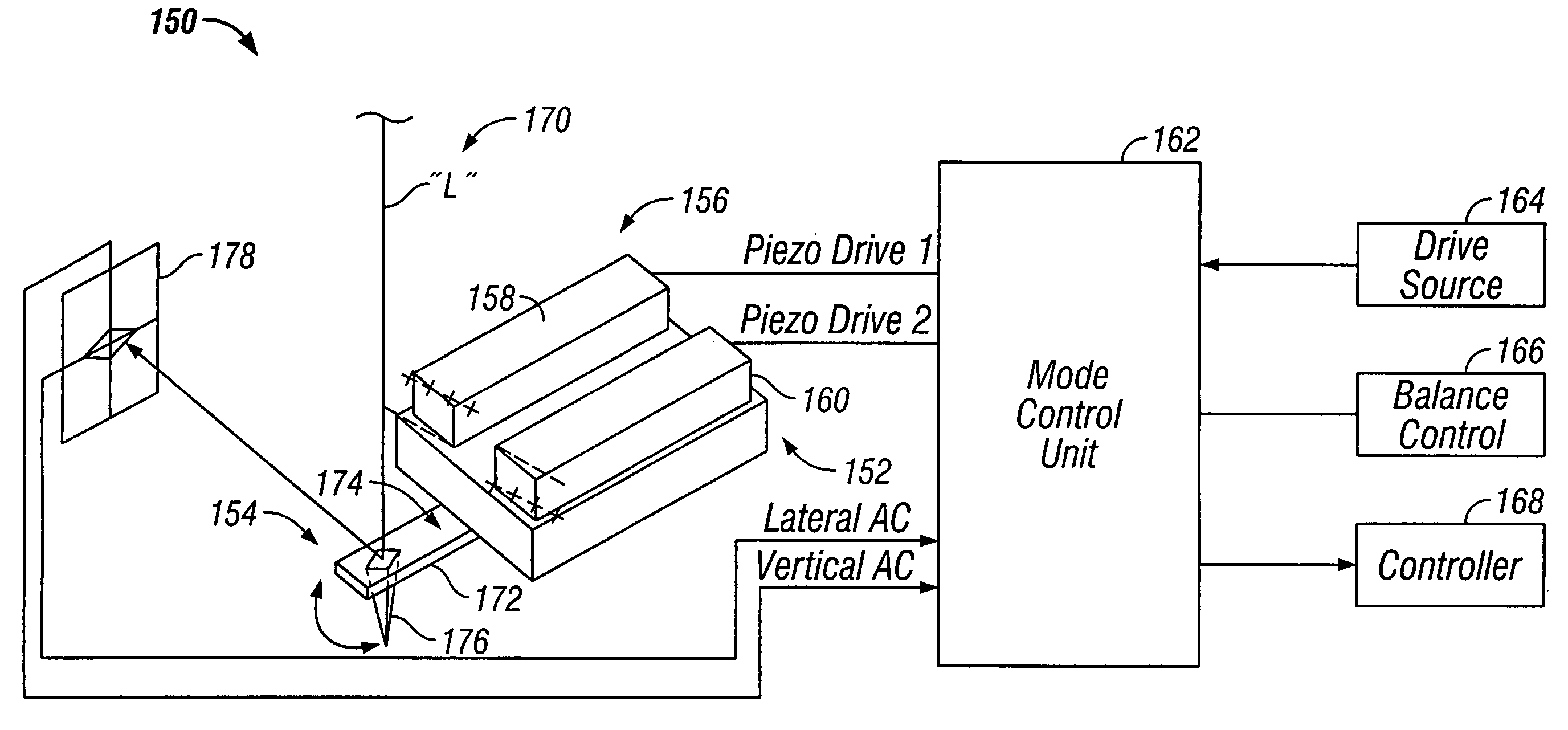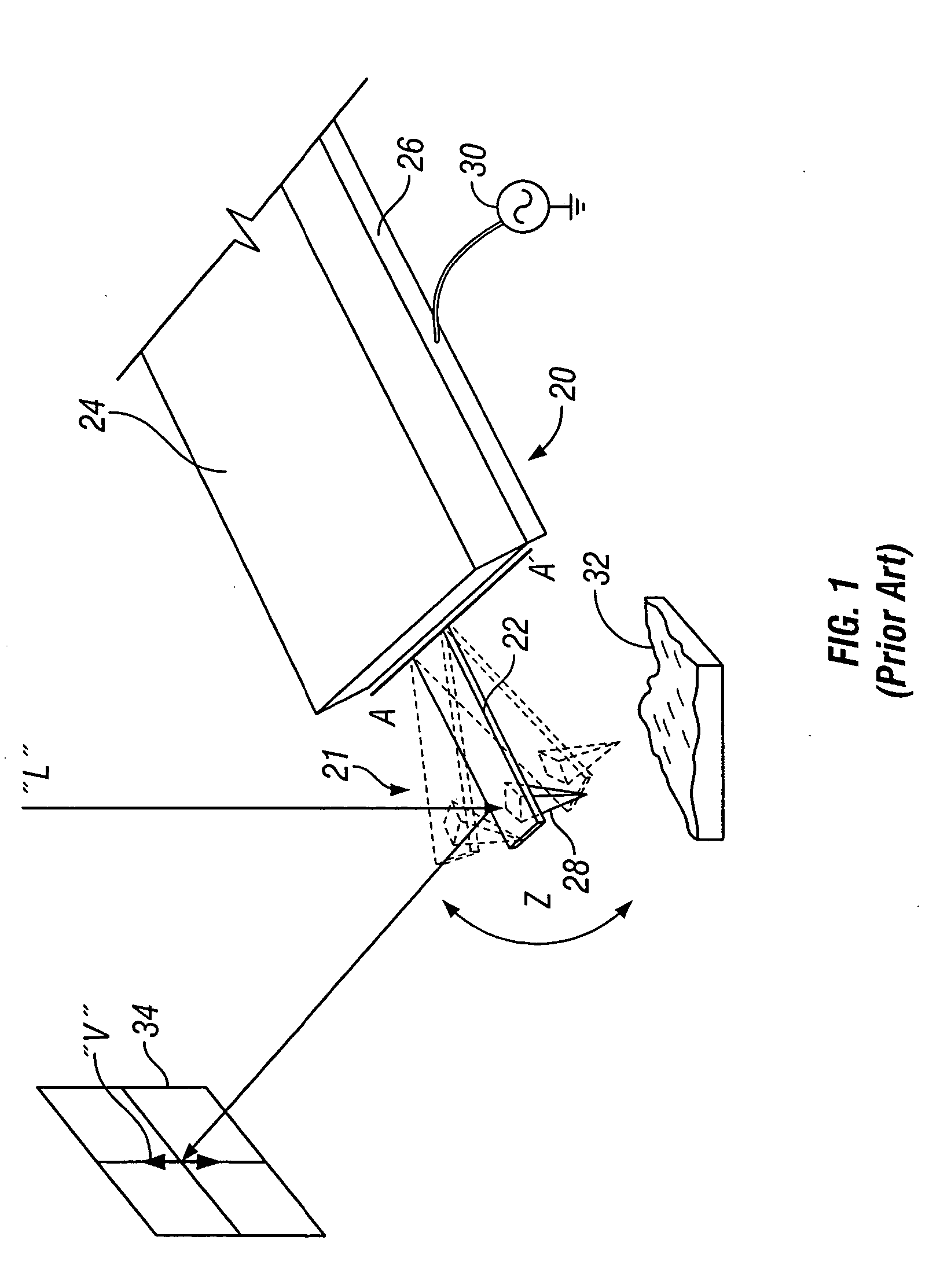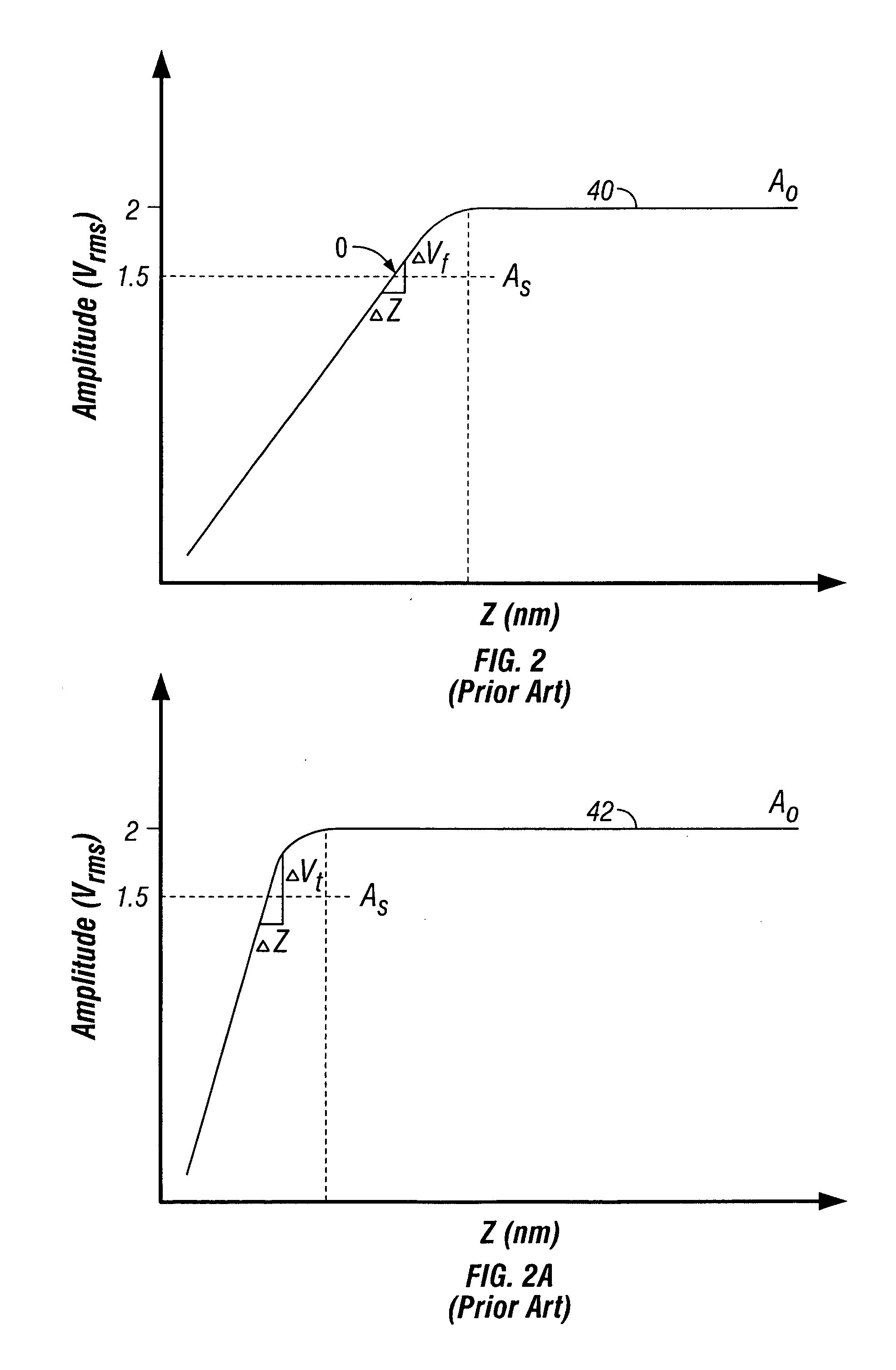One limiting characteristic of AFMs and other probe-based instruments lies in the above-described
modes of operation.
As a result, flexural mode AFMs do not detect
shear force interaction, and thus also cannot provide
shear force or force gradient information.
Moreover, without
shear force or shear force gradient measurement capabilities, flexural mode operation often results in loss of other information relating to the sample.
As a result, the
control error will correspond to a greater quantity of height measurement error.
The situation is particularly problematic when the probe is scanning across an abrupt step where slower response due to error integration will result in even greater inaccuracy for a given scan speed.
Yet another limitation with flexural mode operation is that the flexural
resonance is very sensitive to the imaging environment (e.g., when the sample is immersed in water), and thus oscillation properties often change drastically, and in unpredictable ways, upon change in imaging environment.
Other
modes of AFM operation are similarly limited.
In addition to the drawbacks associated with using
contact mode to detect topology characteristics, including tip / sample damage, etc., LFM suffers the
disadvantage of large tip / sample forces associated with
contact mode, and poor
repeatability.
However, the
lateral deflection signals are small, and thus often unusable, and resolution is insufficient for some of the applications contemplated by the present invention.
In addition, although
lateral deflection signals induced by motion of the sample at acoustic frequencies can be enhanced, the main control loop that defines tip / surface relative position still employs
vertical deflection (
contact mode) feedback and, therefore, suffers the drawbacks associated with flexural contact
modes.
One challenge in implementing an AFM to image in
torsional resonance mode is that optimum performance depends on efficiently driving the cantilever probe into torsional
resonance.
A potential problem arises with standard AFM cantilevers designed for flexural oscillation due to the fact that there is physical
asymmetry along the corresponding length of the lever which although acceptable when driving the probe into flexural oscillation, can render driving the cantilever into pure torsional resonance difficult.
The problem is, it is difficult to insure that the central axis of the probe lies at the rotation center of the drive.
For instance, mounting the probe (i.e., probe
chip) in the AFM head is often an imprecise task due to allowable variations in probe
chip position, as well as structural variations of the probe
chip and probe itself.
In addition, even if the actuators are positioned
equidistant from the central axis of the cantilever, due to fabrication limitations, it is difficult to determine whether the drive actuators are positioned symmetrically about the tip which, although preferably resides at the central axis of the lever, often does not.
Notably, in this regard, the tip of the probe attached to the lever is relatively massive (it can be as much as fifteen microns long) such that the
inertia of the tip causes a torque.
Overall, however, it is difficult to determine the amount of lateral motion that can be provided by such a
system due to inefficiencies
coupling the energy to the tip caused by the imperfect
spatial relationship between the probe tip and the drive.
As a practical matter, however, because the tip typically is not centered, due to, for example, imperfections produced during the probe manufacturing process which may cause the tip to be positioned off the central axis of the cantilever or the entire probe to be mounted off-center intermediate the two piezo plates when secured in the AFM head.
Whatever the cause, this compromised relationship between the drive and the probe can produce imperfect lateral motion of the cantilever, and thus the tip.
Such non-ideal motion lowers the efficiency of operation in torsional resonance mode.
For instance, a vertical component in the cantilever motion can make maintaining operation at the
setpoint difficult.
Therefore, the vertical component of cantilever motion may become mixed with torsional oscillation such that the
system becomes very unstable, with the possibility that AFM operation toggles between, for instance, torsional resonance and flexural resonance modes of AFM operation.
Clearly, this unpredictability is non-ideal.
Given the scale of operation, one key challenge in using an AFM probe to perform nanomanipulation is determining whether a particular operation associated with manipulating nanoparticles has actually been accomplished.
In standard AFM operation, once a target to be manipulated has been identified and an operation attempted by the AFM probe, there is no convenient way to determine whether the target has actually been acted on.
However, because the target to be manipulated typically does not have an appreciably greater weight than the tip, methods based on directly measuring a change in weight are unreliable and, in any event, difficult to implement.
In fact, there is such a small change in
mass at the tip, e.g., one part in a million of the entire cantilever, directly measuring the change is generally impossible.
In addition, known techniques for performing nanomanipulation, such as ones that employ what are known as “nanotweezers,” have significant limitations.
Most such techniques only have the ability to manipulate targets that are on the scale of a micron or even a little larger.
This is due to the fact that there are often difficulties associated with locating the
tweezers at a location of interest, and controlling the force applied by the
tweezers to the sample, for example.
One problem with such a
system is that large magnitude forces are required to close the arms, which can compromise the object being manipulated.
Moreover, in this regard, the dimensions of candidate target objects to be manipulated are correspondingly limited in that objects that are too small cannot be feasibly manipulated, especially given the higher voltages, and thus the higher forces, that are difficult to accurately control.
 Login to View More
Login to View More  Login to View More
Login to View More 


